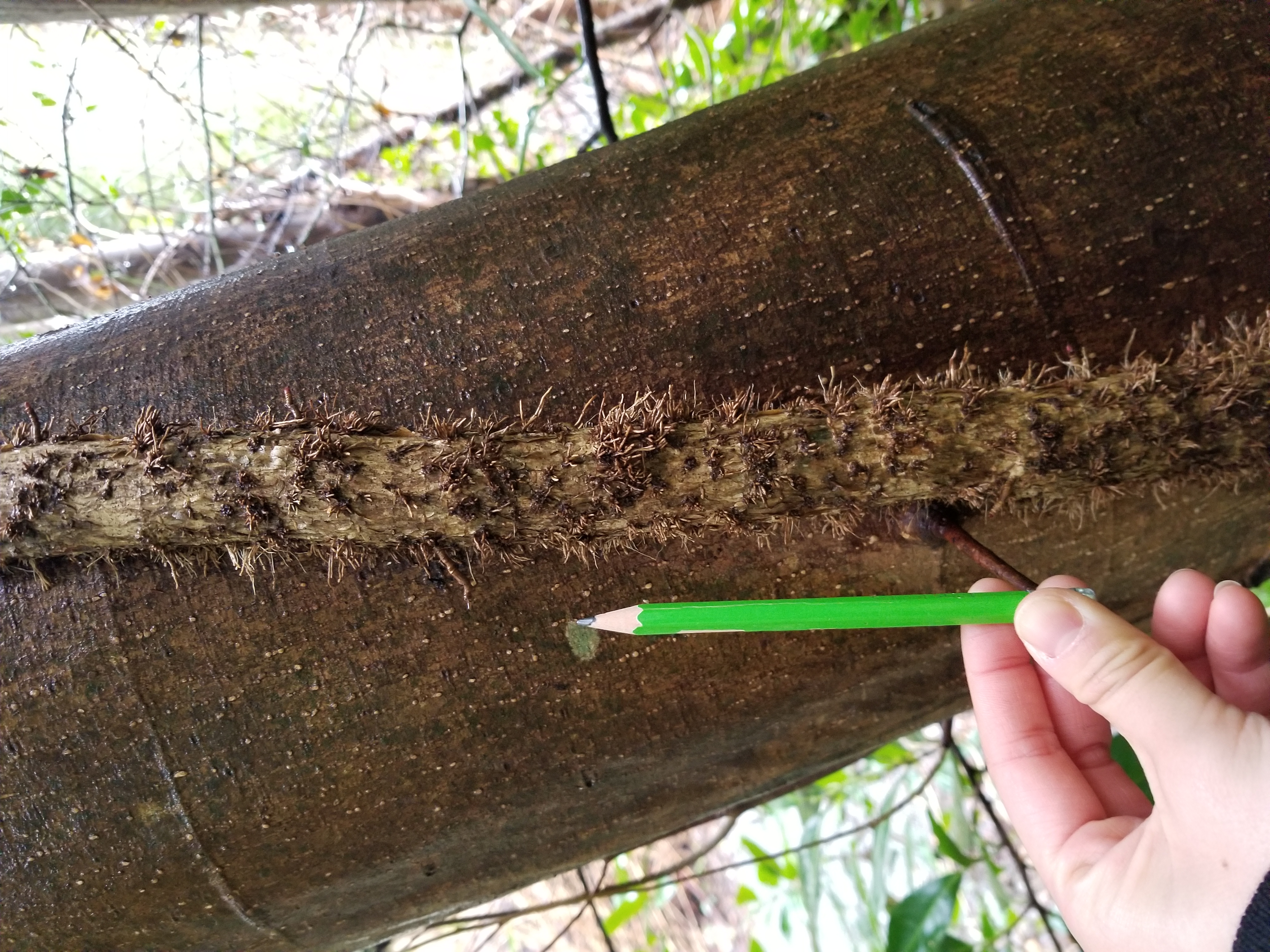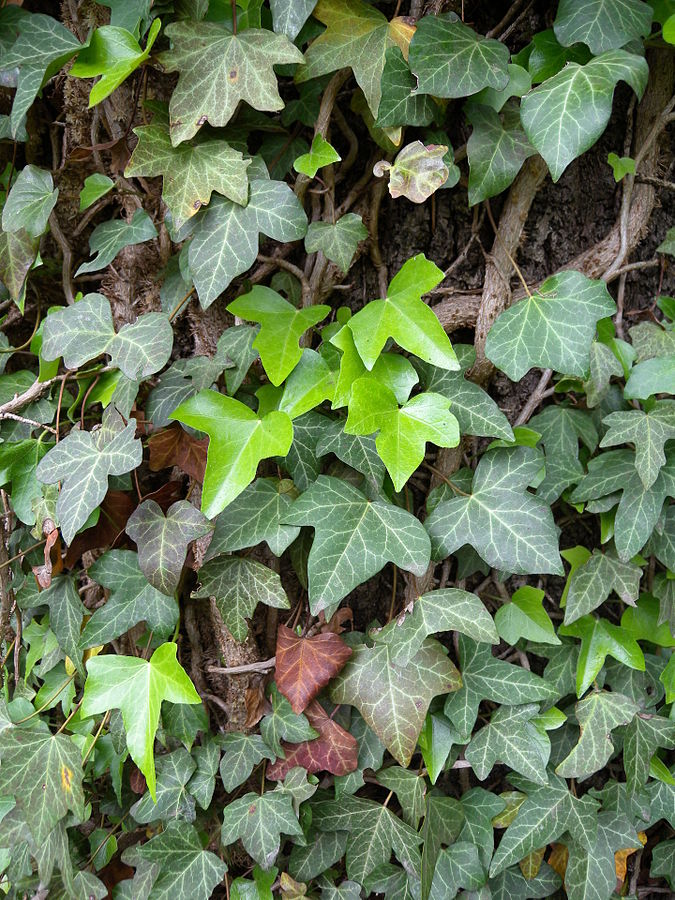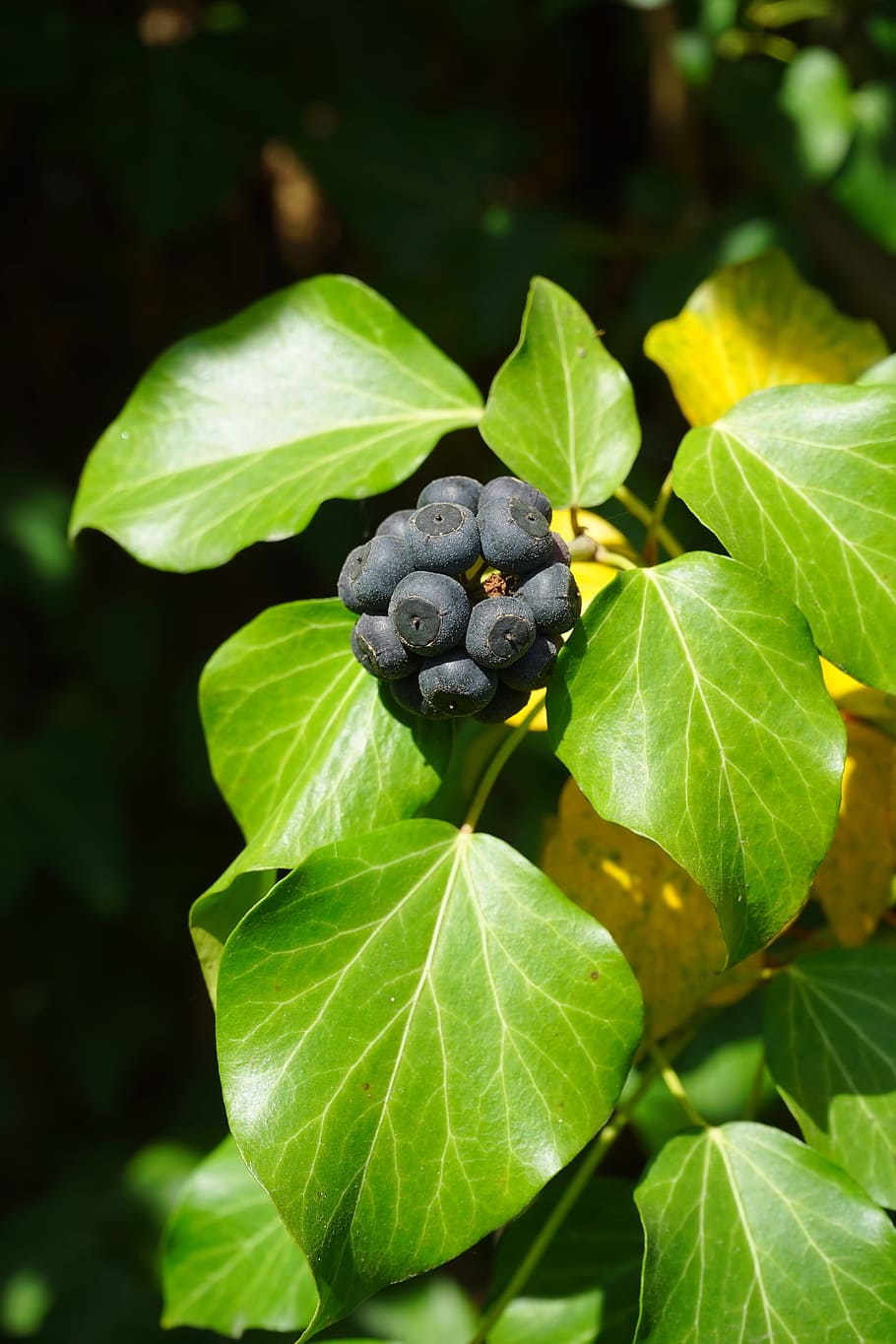English Ivy

English Ivy
(Hedera helix)
Priority: - Established / Strategic Control
Tags: Terrestrial
Identification and Reproduction
Identification:
- Ivy is a semi-woody evergreen groundcover and climbing vine. As a ground cover it can reach a height of 1 foot and cover a large area. As a vine it can adhere and climb trees, buildings and other surfaces.
- Ivy leaves are arranged alternately are green and glossy. Juvenile leaves (left) are ovate in shape with three to five lobes. Mature leaves (right) will be egg-shaped and unlobed.
- With maturity this plant will develop dark blue to black fruits that look like circular stones.
- Flowers will develop in clusters on the terminal stems. They are small, green to yellow in colour and globular with five distinct stems/petals.
- As this plant climbs it can from thick stems can grow woody and can reach up to 25 cm in diameter.

(Larissa Lau, BCIT)
Reproduction:
- Ivy can take years to reach maturity to reproduce, however when it does it will produce black fruits that matures in April. Some birds and other wild creatures will consume the seeds and distribute them further.
- It primarily spreads vegetatively through stems and roots.
- Adventitious roots allow the plant to stick to natural and man-made structures.
- Broken root parts will also grow new plants.
Habitat & Ecology
- They are highly tolerable species and be found almost anywhere from full shade to full sun locations.
- Ivy is often found in and around urban forests.
Impacts
Social:
- Climbing ivy can damage buildings, roads and walls/fences.
- Ivy is also toxic for human consumption and can cause skin irratation.
- Dense ivy sites can also provide a hiding shelter for rats and dangerous debris.
Ecological:
- Dense ivy mats will cover forested and open areas, choking out any ground vegetation.
- As a vine they can reduce sunlight availability and weaken trees. This leaves trees susceptible to blowdown and imminent death.
- When ivy climbs trees they can also become shrubby and this can also shade our ground cover species.
- The berries are mildly toxic to birds.
- They weight of the vines can also break tree branches and damage bark.
Management
Mechanical/Manual Control:
- The plant can be effectively removed from the ground by hand pulling and cutting. Ensure that all stem and root fragments are collected to prevent regrowth.
- If ivy covers a large area consider using the "burrito roll" method; starting from the outer edge of the infestation, cut and loosen roots then rolling the mat and disposing properly.
- If the vines are growing vertically, it is more effective to cut vines at chest height and let it die off.
- Do not compost; dispose the plant properly at the landfill.
For alternative planting options to English Ivy, check out the ISCBC's Grow Me Instead guide.
Resources
For further details on English Ivy control please refer to the Metro Vancouver Best Management Practices for English and Irish Ivies (pg. 12-21)
Download the Metro Vancouver Factsheet on English and Irish Ivies here.
Download the Invasive Species Council of BC's Factsheet for English Ivy here.
For additional information on English ivy identification and control check out King County's page. Note that this is a US resource and Canadian guidelines and regulations may differ. Be sure to carefully read and follow product labels.
Header photo (Mokkie).
Photo Gallery










